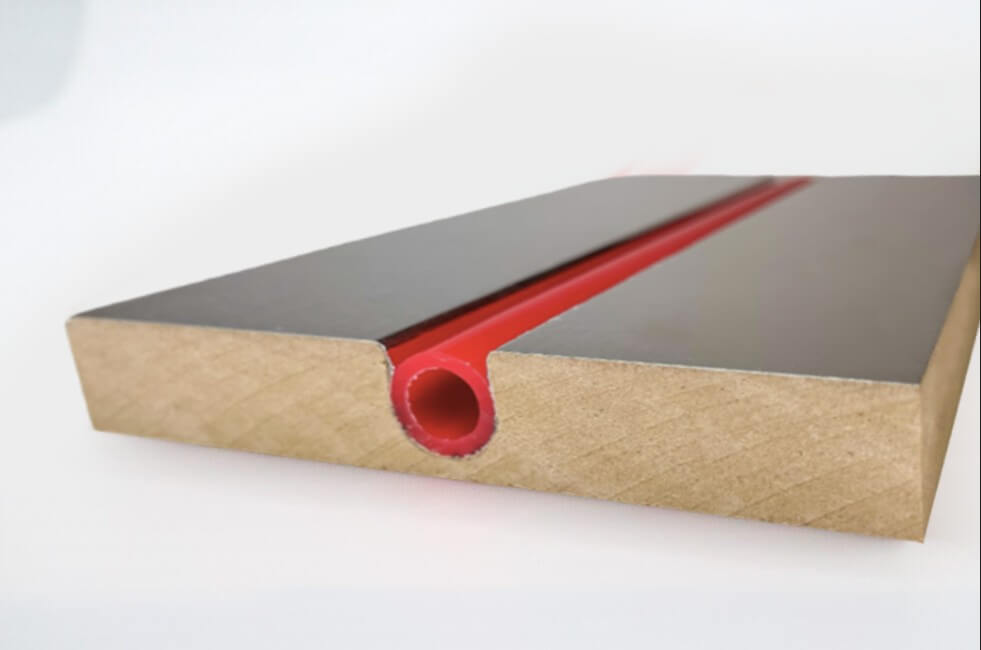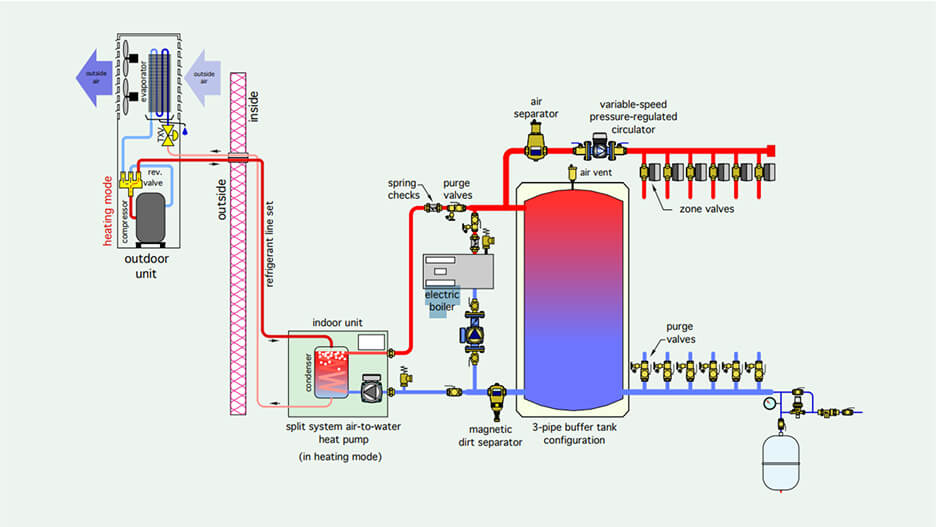Radiant Floor Heating Boiler vs. Traditional Heating Systems: What’s More Efficient?
Radiant Floor Heating vs. Traditional Boilers: Which Delivers Better Efficiency?

Homeowners today want comfort, efficiency, and reliability from their heating systems. Traditional forced-air furnaces have been the standard for decades, but radiant floor heating paired with a high-efficiency boiler is now one of the most comfortable and energy-efficient ways to heat a home. Let’s compare radiant systems to traditional ones and look at how WBI radiant panels make the system perform even better.
How a Radiant Floor Heating Boiler Works
A radiant heat boiler sends warm water through PEX tubing installed beneath the floor. That heat rises evenly through the flooring surface and warms the entire space from the ground up. Instead of blowing heated air through ducts, boiler for radiant floor heating transfers warmth directly to people and objects, creating consistent comfort without drafts or cold spots.
When paired with WBI’s RadiantBoard and ThermalBoard panels, heat transfer becomes even more effective. These panels feature aluminum surfaces that spread warmth evenly across the floor, allowing the radiant floor heating boiler to operate at lower water temperatures and improving overall system efficiency.
Boiler vs. Traditional Furnace: Efficiency and Comfort
- Even Heat Distribution
Forced-air systems heat air that quickly moves to the ceiling, leaving cooler floors. A radiant floor heating boiler keeps the warmth where it matters most, at floor level, producing steady, even comfort in every room. Unlike furnaces that switch on and off frequently, boiler radiant floor heating systems provide a steady flow of warmth, maintaining a balanced indoor climate throughout the day. - Lower Operating Temperatures
Radiant systems often operate with water temperatures between 90 and 130°F, much lower than those needed for baseboard or radiator systems. This means the boiler runs more efficiently, saving energy while still delivering the same comfort level. Over time, this lower operating temperature reduces wear and tear on the system components, enhancing the overall lifespan of both the boiler and the radiant panels.
- Reduced Heat Loss
Ductwork in forced-air systems can lose up to 30% of generated heat through leaks and poor insulation. Radiant systems eliminate that problem entirely by circulating heat through the floor. Because the heat is transferred directly into the living space, very little energy goes to waste, which makes radiant heating one of the most efficient heating technologies available today. - Better Indoor Air Quality
No ducts mean no dust, allergens, or noisy air movement. A radiant heat boiler provides quiet, clean, and healthy comfort throughout the home. This is especially beneficial for people with allergies or respiratory sensitivities who prefer a heating system that keeps the indoor air cleaner.
Choosing the Right Boiler for Radiant Floor Heating

Modern modulating condensing boilers are ideal partners for radiant systems. They automatically adjust their output to match the heating load, operating more efficiently at lower water temperatures.
Several types of boilers work well with radiant panels:
- Electric boilers – Compact and reliable, great for smaller homes or all-electric systems.
- Gas or propane condensing boilers – High-efficiency options for whole-home systems.
- Oil boilers – Useful where natural gas is not available but may require more maintenance.
WBI panels are compatible with all of these options. Their design helps lower the supply temperature the radiant heat boiler needs to maintain comfort, which directly improves boiler efficiency and shortens recovery times.
Energy Savings and Payback
Radiant systems may have a higher initial cost than traditional forced-air systems, but the long-term savings are clear. Homeowners often experience 15 to 30 percent lower heating costs each year.
By combining a modern boiler with WBI radiant panels, you can achieve faster heat response, greater comfort, and measurable energy savings that pay off season after season. Over time, these savings offset the installation cost while offering enhanced durability and lower maintenance needs.
Best Places to Use Radiant Heating
Radiant floor heating is ideal for:
- New construction or remodeling projects
- Basements, bathrooms, and kitchens
- Homes built over concrete or wooden subfloors
- Whole-home comfort systems using RadiantBoard, ThermalBoard, or RadiantBoard EPS panels
Conclusion
When comparing radiant floor heating boilers to traditional heating systems, radiant heat clearly provides more consistent comfort, higher energy efficiency, and better air quality. With WBI radiant panels, the system performs at its best, transferring heat quickly and efficiently through the floor.
For homeowners, that means more comfort, less wasted energy, and a heating system that truly redefines modern home comfort. As energy costs continue to rise, investing in a radiant floor heating boiler becomes not just a comfort upgrade but a smart, sustainable decision for the future.